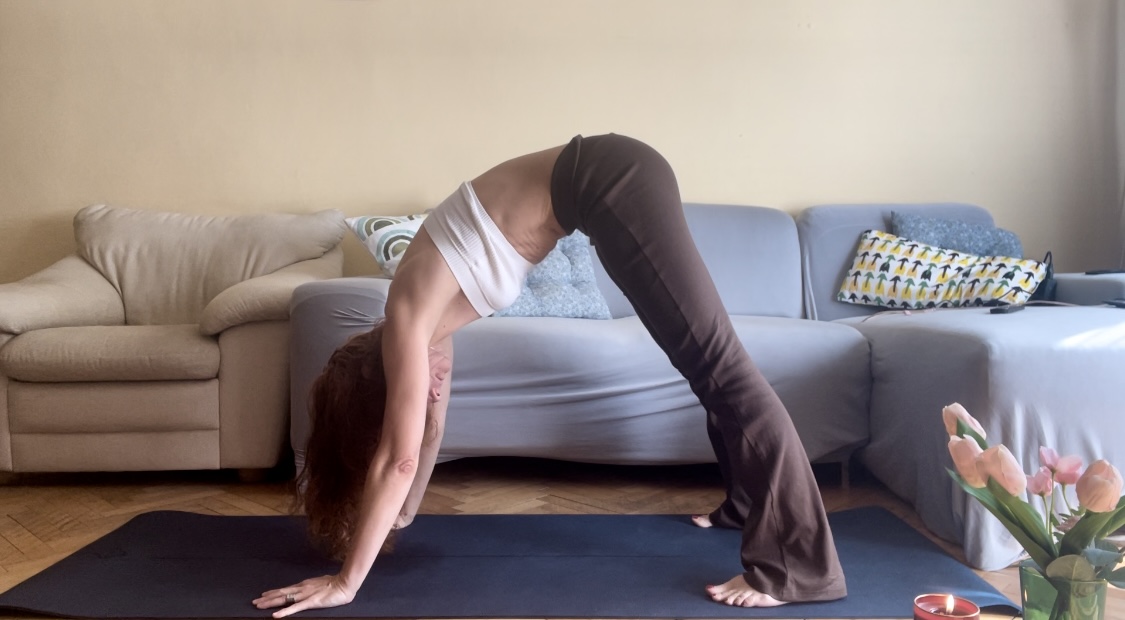Discover: Benefits and Tips for Downward Facing Dog for Beginners
The “Adho Mukha Svanasana,” or “Downward Facing Dog” pose, is one of the most recognizable and fundamental poses in yoga practice. It offers numerous benefits for both the body and mind and is often used as a transitional pose between different asanas. Personally, it’s a favorite pose of mine as a yoga beginner because it allows me to improve my flexibility and strengthen the muscles of my shoulders, back, and core, which is important for achieving a handstand. My goal is to be able to perform a handstand in Adho Mukha Vrksasana within six months.
How to Perform Downward Facing Dog:
Start on all fours: Place your knees under your hips and your hands under your shoulders, forming a “tabletop” position. Spread your fingers wide to ensure a stable base.
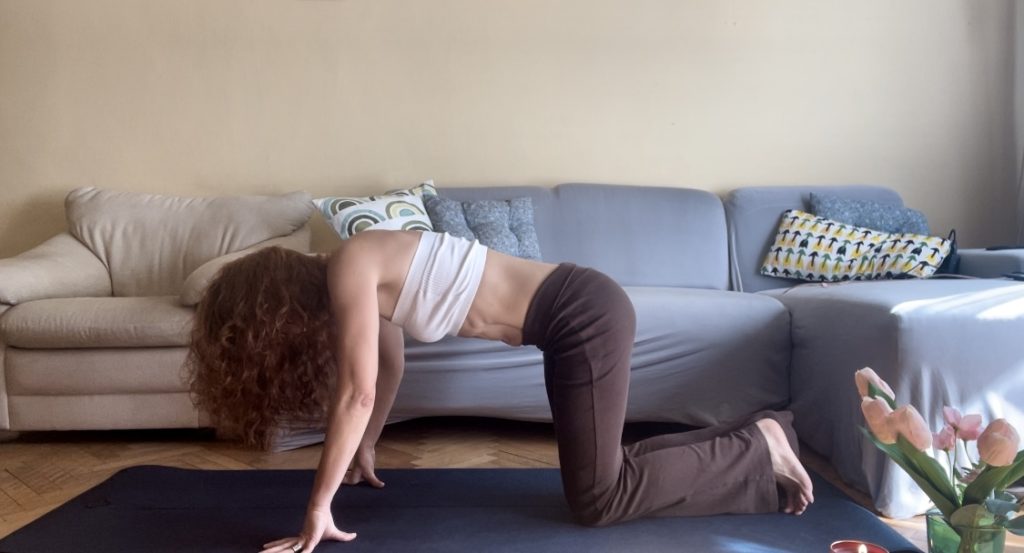
Position the hands and feet: Stretch your hands forward, pressing your palms into the floor. Slowly straighten your legs by lifting your knees and shifting your weight towards your heels.
Form the pose: Lift your hips and extend your spine so that your body forms an inverted “V”. The heels should aim towards the floor but don’t need to touch it. Ensure your spine is straight, even if this means keeping your knees slightly bent.
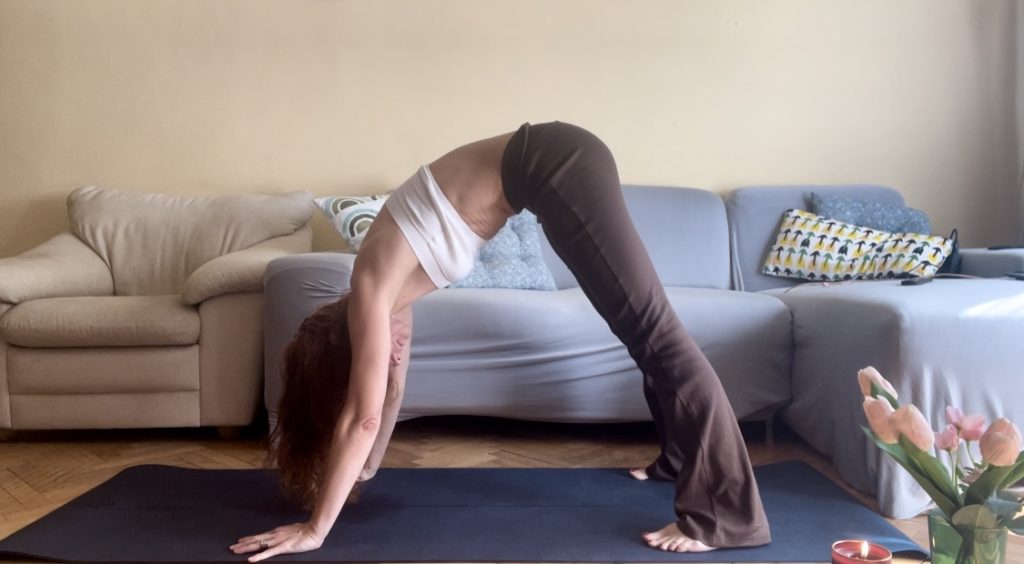
Head and neck position: Your head should be between your arms, with your ears aligned with your arms. Relax your neck and gaze towards your thighs or knees.
Breathing: Breathe deeply and evenly while holding the position. Stay in the pose for 5 to 10 breaths or as long as is comfortable.
Exiting the pose: To exit, gently bend your knees and return to the starting position on your knees and hands, or move into the next asana in your sequence.
Tips:
Keep your knees slightly bent if the back of your legs is tight.
Actively use your hands to pull your shoulders away from your ears.
Focus on lengthening your spine and don’t worry if your heels don’t touch the floor.
When I stand in the pose, I shift my weight several times from my toes to my heels to make the stretch smoother. I smoothly extend the opposite arm of the leg I’m moving.
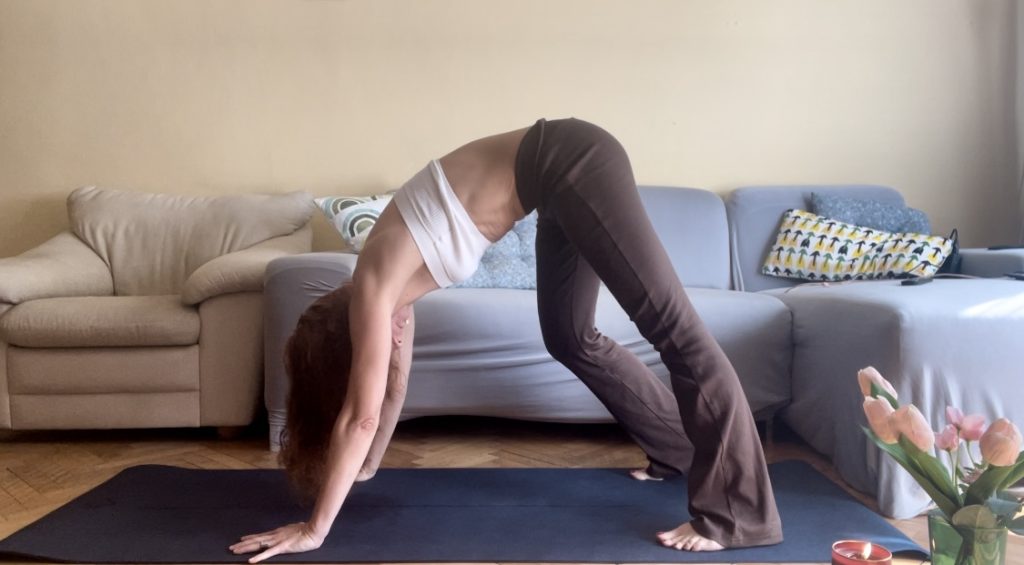
The Downward Facing Dog pose can be excellent for strengthening and stretching the entire body. Practice it regularly to improve flexibility and reduce tension.
Benefits of Practicing Downward Facing Dog:
Strengthening muscles. This pose engages the muscles of the arms, shoulders, back, and legs, strengthening the entire body.
Improving your flexibility. Regular practice enhances the flexibility of your back and the back of your legs.
Facilitating circulation. The head is positioned lower than the heart, which helps stimulate circulation and improves oxygen flow to the brain.
Relieving stress. The pose has a calming effect on the nervous system, which helps with stress and anxiety.
Improving posture. Practicing Downward Facing Dog can improve posture and prevent back issues.
How to Add Three-Legged Dog to Your Practice.
The Three-Legged Dog is a variation of Downward Facing Dog that involves lifting one leg and is excellent for enhancing strength and balance.
Start in Downward Facing Dog: Place your hands firmly on the ground, fingers facing forward. Keep your legs straight and your heels directed towards the floor.
Lift one leg: As you inhale, slowly raise one leg, keeping it straight. Aim to keep your hips parallel to the floor to maintain balance.

Hold the pose: Stay in this position for several breaths, then slowly lower the leg back to the floor and repeat with the other leg.
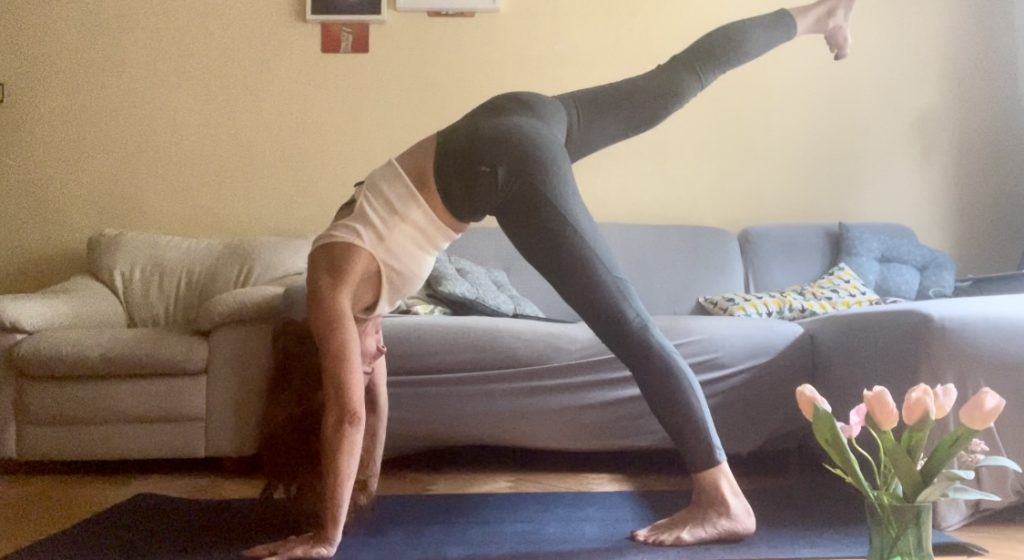
How to Combine with Extended Puppy Pose:
“Uttana Shishosana” or Extended Puppy Pose is a great pose for stretching the spine and shoulders. It’s especially suitable as a transition from poses that load the upper back, shoulders, and back of the legs. Personally, I like to include it after being in Downward Facing Dog.
From Downward Facing Dog to Extended Puppy: Start in Downward Facing Dog. Slowly lower your knees to the floor while keeping your arms extended forward.
Stretching: Lower your chest toward the floor, keeping your hips elevated and arms extended. Your head can rest on the floor or your forehead.

Hold and release: Relax into the position for several breaths, allowing the muscles of the spine and shoulder girdle to release and stretch.
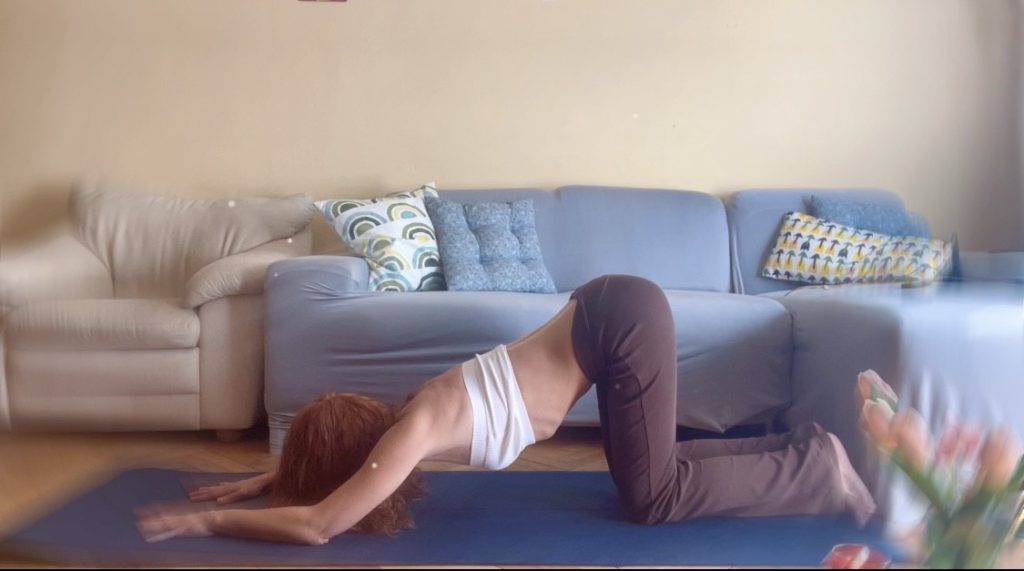
Benefits of Practicing Downward Facing Dog
- Spinal Stretch and Decompression
- Shoulder Opening
- Calming the Mind
- Enhancing Flexibility
- Improved Circulation
- Reduced Tension and Fatigue
- Support for Breathing
Integrating these poses into your practice can help improve your physical condition, develop flexibility and balance, and reduce stress. Combine them in a way that suits your needs and abilities, and enjoy the benefits yoga offers.
Be patient with the process and enjoy your yoga journey!
Be inspired and enjoy every moment!
